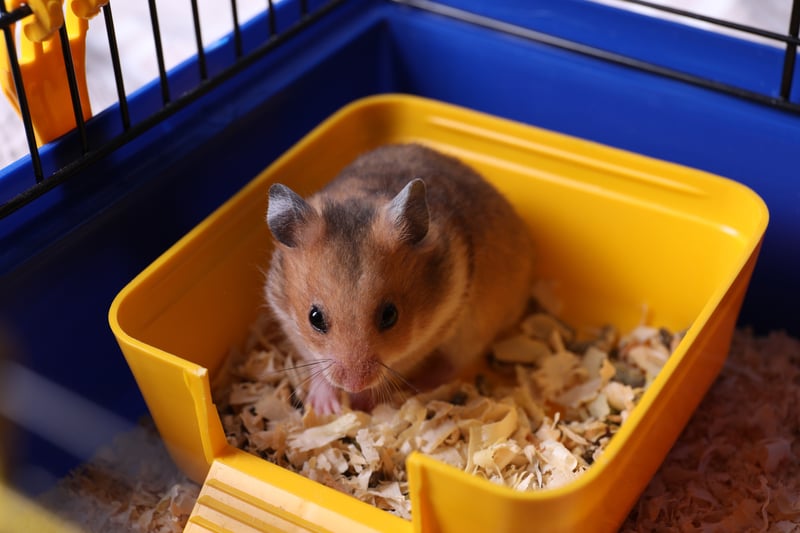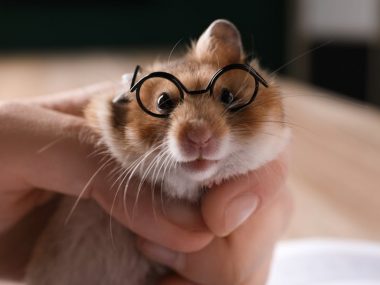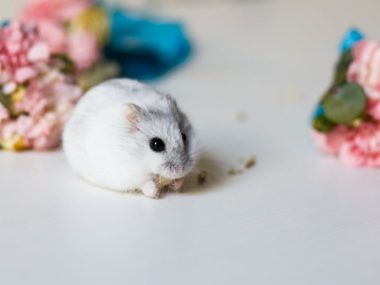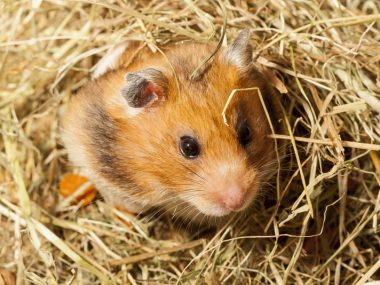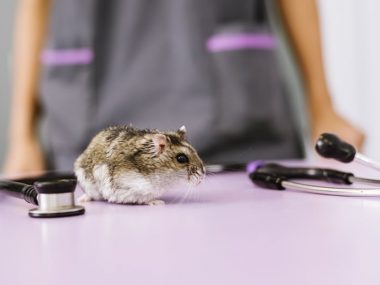Warning: Dinnertime may not be the best time to read this article!
Hamsters are extremely clean animals and spend a lot of time grooming. So it may be somewhat surprising to hear that they need to consume some of their own poop to maintain good digestive health. After all, you feed them healthy, nutritious food with treats, so why would they need to do something so icky?
Hamsters need to consume some of their own poop to maintain good digestive health. The scientific term for this is coprophagia, and it is common in the animal kingdom. Partially digested soft feces called cecotropes are usually passed at night and are often consumed immediately.
Before you go and create a special plate of hamster droppings for your little pet, we need to add a bit more detail. Only a small amount is eaten, and it must be a particular type of poop. Let’s learn more about this habit and why it is essential for your hamster’s health.
Table of Contents
Why Do Hamsters Eat Their Poop?
You may have had your hamster for a long time and never seen it give its food a second round. Fortunately, our little pets are discreet about this natural and necessary habit, and suitable soft feces is usually consumed as it emerges from the hammie’s bottom.
At this point, you may be filled with questions, like, should I feed my hammie differently, so it stops doing this? While coprophagy is difficult for humans to understand, it is a necessary and vital aspect of being a hamster. The little pets need to consume some of their soft night poop to absorb essential Vitamins K and B that are not available to them in any other form.
According to the Merck Veterinary Manual, hamsters are naturally coprophagic. It is expected and entirely normal hamster behavior.
To find the answer to why hamsters need to eat some of their own poop, we need to turn to science.
How Does Hamster Digestion Work?
To understand why hamsters need to consume a portion of their feces, we must first understand how their digestive system works. Let’s go through the six stages of hamster digestion.
- Hammie munches some delicious hamster pellets or veggies. This is mostly plant material, so the walls of the cells are made of tough cellulose. The hamster’s digestive system needs to contain the right microbes capable of breaking down the thick material to absorb nutrients.
- The meal moves from the hamster’s stomach along its intestine – but here’s the hiccup – the system where a lot of important digestion and fermentation takes place is in an area well past the stomach and small intestine.
Very little digestion takes place in the large intestine, so it is usually too late when food gets there, and the remaining material is generally on a one-way track out. - Hamsters and some other rodents and rabbits have a unique ability. Instead of pooping out everything moving through their gut, special backward contractions move some of the material back into an area called the cecum (this is kind of like a human appendix).
In a scientific study published in the journal Mammalia, the caecum was found to be more critical to hamsters than its actual stomach. It is bigger than the stomach and the site of more significant microbial activity. - The cecum contains special bacteria that break down cellulose and other tough material into easy-to-digest nutrients.
- Now comes the tricky part – once the food has been broken down and made more digestible for the animal, it is already too far down the digestive tract. Not much can be absorbed from the large intestine, so the microbe-laden, super-digestible hamster superfood called cecotropes gets pooped out.
- Your clever hammie can tell the difference between regular dry poop that must be discarded and these superfood bits of cecotrope poop that contain essential digestible vitamins. To get the goodness from this hindgut action, hamsters quickly swallow the soft bits of cecotropes.
Now that it is predigested, the hamster’s stomach and small intestine can absorb the essential nutrients.

What Do Cecotropes Look Like?
Cecotropes are different from the dry bits of hamster poop you find in your pet’s cage. We all know the brown-black pellets that our hammies seem to be able to spread across large parts of their cage. Sometimes, they even appear to fling bits of dry poop around when they are bored or want to mark a section of their cage.
You won’t find your hamster hurling cecotrope poop around. This special-variety poop is often called Night feces and is entirely different from the dry stuff. Cecotropes are smaller, sofer, and usually coated with a film of green mucous, making them stick together.
Regular feces and cecotropes are not passed at the same time. The hamster will know what package to expect, and while most poop needs to find its way into your hamster’s potty section, the valuable, nutritious cecotropes are quickly consumed.
Many hamster owners are unaware of this digestive requirement as hammies often quickly gobble it up immediately as it is passed.
What Happens To The Cecotropes In the Hamster’s Stomach?
During its visit to the cecum, the food material was made more digestible for the hamster’s digestive system. However, the challenge is how to get it back into the stomach and small intestine so that the body can absorb the trace elements and nutrients that couldn’t happen on its first pass through.
Fortunately, hamsters and many other omnivorous animals have developed this nifty ability to quickly gobble down these special poops. You may not see them do it because it often happens at night.
On their second pass through the stomach and small intestine, they can absorb essential nutrients and Vitamin B and K from the food which was not in a useable form to them the first time. In studies, animals that were prevented from eating cecotropes developed malnutrition.
Once this second round of poop moves through the digestive tract, it goes straight through and becomes the dark color dry little pellet type poops. For anyone trying to potty train their hamster, the dry poop produced by the animal is old and should be removed from the cage.
Frequently Asked Questions
Should I Remove Hamster Poop?
It is vital to keep your hamster cage hygienic and clean. Although hamsters need to eat some of their poop, it is not the same as the dry, dark brown bits that you may find scattered all around inside its cage.
Hamsters only need to consume special night poop called Cecotropes, which are soft. Hammie will probably gobble those down as soon as they emerge, so it’s safe to say you should regularly clean the hamster cage and remove all old poop. Check out some of our pro tips on how to clean your hamster’s cage.
Is It Okay For Hamsters To Eat Their Poop?
It is not only okay; hamsters must eat some of their own poop.
A study in Laboratory Animal Medicine demonstrated that animals prevented from eating the nutrient-rich soft cecotrope poop showed signs of deficiencies that made them more susceptible to diseases.
It is actually quite unlikely that you will see your hamster eating its own poop because they are pretty discreet about it. They never eat the hard, dry poops you see inside the cage when cleaning. The soft feces they need for digestive health is passed during the night and consumed immediately.
Continue to feed your hamster a healthy, balanced hamster diet so it can carry on being a healthy, active little bundle of joy. Click here for some excellent hamster feeding tips.
